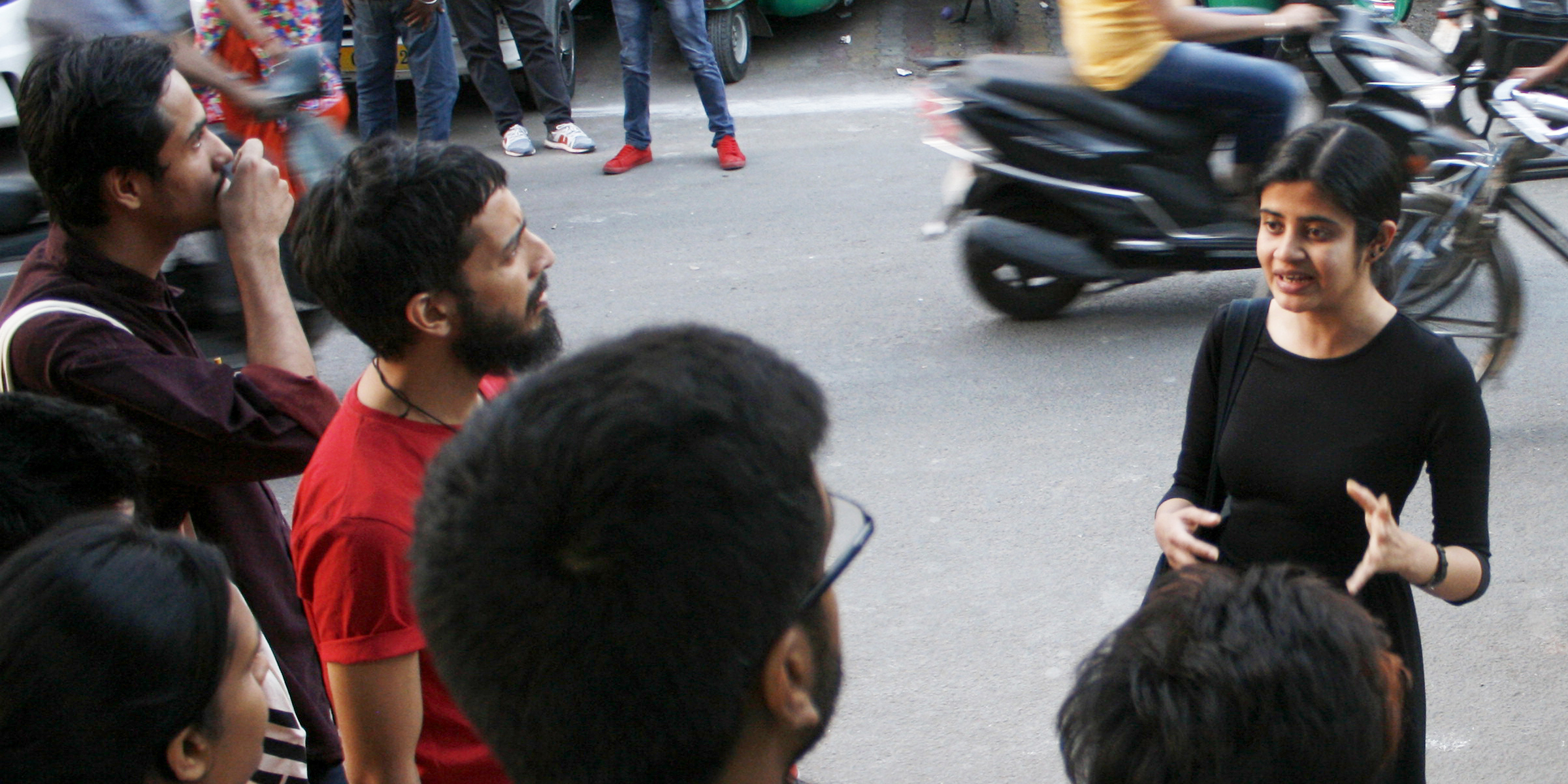Since 2017, Pooja has been conducting guided typographic tours that reacquaint participants with their neighbourhoods from the vantage point of signage and letterforms. These walks are an excellent way for designers and non-designers alike to learn about how typography and lettering in public spaces shape our experience of them, and how they are, themselves, a product of social, cultural, even legal developments.
To learn more about what goes into preparing these walks, and the motivations behind them, check out this talk from TypeWknd 2020.
-
Mandi House Type Walk
Pooja debuted a new type walk in Mandi House to complement Instituto Cervantes of New Delhi’s exhibition Tipografía Iberoamericana. The group scrutinised the sans serif signs on the cultural organisations in the neighbourhood, dug into tiled lettering on housing and wayfinding, learned more about Indian and foreign scripts that call the locality home, and saw first-hand the work of design greats like Satyajit Ray and Vikas Satwalekar.




-
M.G. Road Type Walk @ DesignUp
Pooja offered a type walk around M.G. Road as a special workshop experience for participants of DesignUp, a community led and volunteer driven conference for product creators, designers, makers and thought-leaders in India and SE Asia. The focus was on the changing typographic landscape of the city, and lessons for designers about making for multilingual and multiscriptual audiences.




-
Drift with Matra Type
As part of the activities happening at Lab59 organised by Ajaibghar, Pooja led a type walk around the famed Pichola Ghats of Udaipur. Along with the walk participants, she identified noteworthy signs in the neighbourhood with an eye on understanding regional variations in Devanagari letterforms, and pinpointing sign painters who were responsible for striking visual styles and forming the typographic landscape around the lake.


-
Men of Faith, Letters of Commerce: A Typographic Tour of M.G. Road
Using the signs and landmarks of M.G. Road as provocation, Pooja talked about the myriad letterforms on display on shop and building fronts — from fast disappearing neon signs to ubiquitous sans serifs and multiscript branding — and discuss their historical and cultural legacies. Together with that, she reminded participants of snapshots of printing history and initiatives driven by colonial missionaries whose presence is still felt at M.G. Road. This type walk was a public event organised by the Bangalore International Centre.






